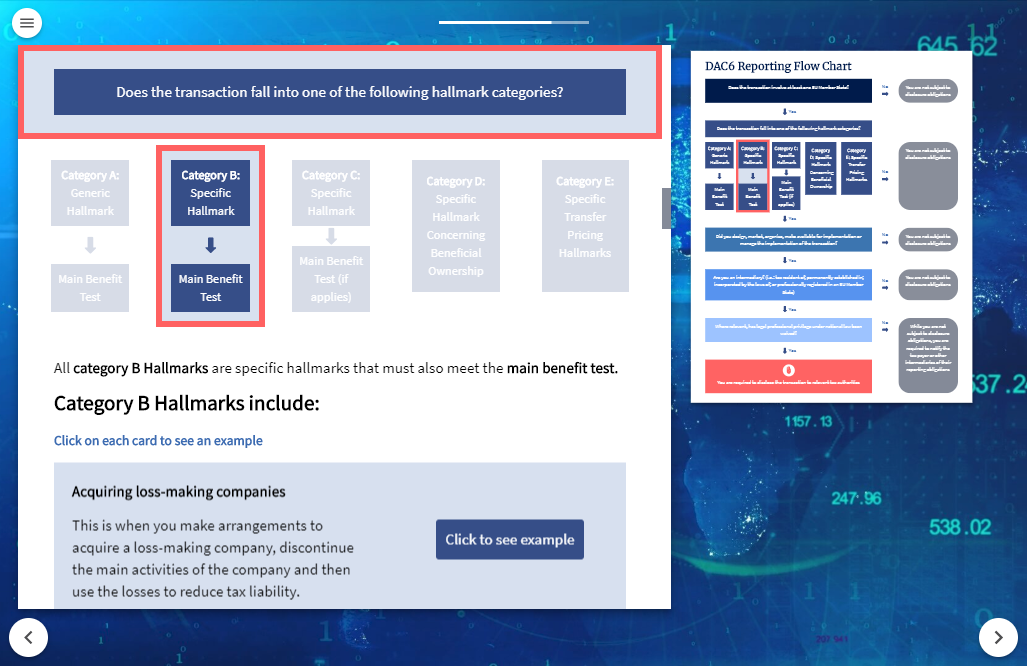Register for our DAC6 email updates

“DAC6 is one of the most difficult pieces of regulation that a firm has to implement”
VinciWorks hosted a roundtable meeting with representatives from over 20 firms to discuss DAC6 and its implementation. Here are the key takeaways from the conversation.
1. Who is responsible for submitting initial DAC6 data if a transaction may be reportable?
In the pre-meeting survey, the responses showed that the main people who would potentially submit initial data would be partners, associates, or nominated jurisdiction representatives. A staggering 50% of the respondents noted that they were unsure who would submit the initial information at this stage. During the discussion it was mentioned by some firms that fee earners would be the ones who would decide if this transaction was reportable, then there would be a second level of quality check to confirm if it was a reportable transaction.
There was also a discussion regarding whether the fee-earner involvement from such an early stage would be chargeable to clients, as it would take up quite a lot of time and resources. It seems that most representatives from both the legal and accounting firms are still not certain what approach to take regarding charging clients for DAC6 reporting.
How can reporting be tackled when dealing with offices in multiple EU Member States?
This question also becomes much more complicated when discussing firms who
practice in many different jurisdictions. However, one attendee discussed that
this might be solved by contracting with clients only through a UK entity,
thereby only requiring reporting to the HMRC. Another method of dealing with
this was creating a task force with representatives within each jurisdiction.
2. How conservative should one be regarding DAC6 reporting?
If you are an intermediary, then unless you fit into the category of an exception, you have an obligation to report. From a reporting perspective, it seems that most participants agree that a conservative approach would be taken regarding reporting, and a risk-averse approach would be taken by most firms. Even if not a reporting intermediary, it would be important to have the details on file for the sake of clarifications in the future should the need arise.
3. When should a transaction be reviewed for DAC6 relevance?
All participants were in agreement that on matter opening, transactions should go through an initial review. However, obviously, as a transaction evolves, it may turn from being non-reportable to reportable and vice versa. In terms of how often you should review, the Directive states the reporting should be within 30 days from when the arrangement is made available for implementation, is ready for implementation or the first steps of implementation are made. Therefore, this should be considered when deciding how often you want to review the transactions for potential DAC6 reporting obligations.
Again, a multi-stage review discussion came up here, both in terms of who and when a transaction is reviewed for DAC reportability, and at what point these would be reviewed. One option would be that as a starting point you could categorise transactions into buckets of those that are obviously not reportable and those that certainly are. Another option suggested may be to review transactions via partners, as opposed to via matters.
4. How are you going to keep up to date with the individual member state reporting requirements, especially when you have offices in multiple EU member states?
In some firms, it is the UK LLP who is the intermediary, regardless of whether they operate outside of the UK, as the foreign offices are acting like branches of the UK LLP. It was noted, however, that if these branches are locally regulated, then they might be subject to local reporting obligations.
One way to deal with situations where there are offices spanning multiple EU member states would be by taking a militant approach and appointing a representative in each jurisdiction or each office within each jurisdiction, who would be the liaison on local DAC6 matters. The next step would be to create a task force to deal with DAC6 which would be centrally controlled, with a fortnightly call with each officer.
A central training mechanism within each of the jurisdictions was also indicated as being useful here, in order to ensure that all staff are on the same page when it comes to DAC6 reporting.
Read more: DAC6 reporting and training solution
5. How are you informing clients who are potentially affected by DAC6 and its implications?
Many firms were undecided on this topic, with most suggesting that it would be included in the client engagement letter, such as a line stating that they will report whenever there is a legal obligation to do so, such as with AML legislation.
The easiest will be when the tax team are already involved in a transaction, so already have client interaction. The problems will arise in transactions where the tax department is not automatically involved from the onset.
For new clients, DAC6 can actually be a marketing and business development process, where firms are also advising clients on DAC6, and their own potential reporting duties.
The consensus of the group was that the awareness of DAC6, in general, was very low. However, there was a strong belief that once this is incorporated into UK legislation, there is a hope that this will help with awareness, as this will be a subject that can no longer be avoided.
6. What percentage of your matters do you think will be reportable under DAC6?
Over a quarter of participants said over 20% of their transactions would be reportable, and another quarter said that between 5%-20% would be reportable. It is obviously hard to really gauge this, as it depends on the type of transactions a firm specialises in. However, this does show that DAC6 will have a large impact on many firms.
7. Is DAC6 a tax or a compliance matter?
Throughout the roundtable, there were quite a few discussions regarding whether it was the compliance team or the tax team who would be the ones who would take the lead on the reporting obligations and have the final word regarding reporting.
A few representatives shared the opinion that this was not a compliance issue at all, and rather should only sit with the tax team, as they are trained in that specific area. However, in such an instance the compliance team would still have an important administrative role to ensure the firm is DAC6 compliant.
Most participants came
from a compliance or risk position, and the general consensus was that while
this is a tax directive, it is a compliance matter, as the risk and onus are on
the firm for failure to comply with the reporting requirements.
8. What is the best way to determine whether someone else is the reporting intermediary?
Some clients may choose to take steps themselves in order to reduce costs. However, there is an interesting practical issue regarding how far a law firm needs to go to verify that another intermediary or the taxpayer will do the reporting so that you no longer are required to do so. Regardless of who is doing the actual reporting, it would still be necessary for firms to record the transaction details, should the need arise to report in the future.
Conclusion

DAC6 requires lawyers, accountants, tax advisers, bankers and other “intermediaries” to report some aggressive cross-border tax arrangements. These “mandatory disclosure requirements” (MDR) are for tax transactions that cross EU borders, where it seems that the primary purpose of the transaction is a tax advantage. Because DAC6 will impact intermediaries’ in different ways, we recommend intermediaries take training to help them understand their exact reporting requirements under DAC6. VinciWorks’ DAC6 reporting and training solution includes a reporting portal for intermediaries as well as two DAC6 courses. Our Advanced course for intermediaries follows a flow-chart navigation and includes example scenarios to help users understand DAC6. DAC6: Fundamentals provides an overview of DAC6 to ensure all staff are aware of what is included in the Directive.












